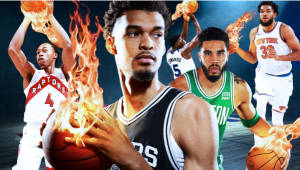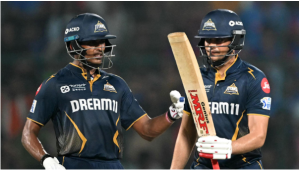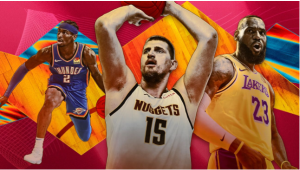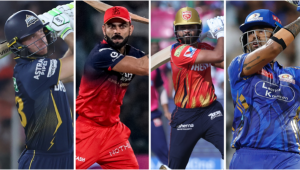At first glance, cricket and basketball seem worlds apart. Cricket is a national treasure in India and Pakistan, steeped in centuries of history, with a complex set of rules and a deep emotional bond with its fans. Basketball, on the other hand, is a product of American show business, centered on speed, statistics, and spectacle. Yet within these differences lies the key – the distinct approaches to fan support, how the sport is perceived, and the way spectators engage with the game.
While cricket fans are often drawn to tradition, atmosphere, and a sense of belonging, NBA fans tend to be more analytical. They focus on metrics, strategies, and making informed decisions, including bets. This shift is reflected in the growing interest in 1xBet NBA odds, which serve not only for gambling but also as a tool for match-based betting – a flexible, data-driven approach to the sports experience.
In many Asian countries, a unique cultural phenomenon is emerging: the same fans might watch an IPL match with friends in the morning, passionately cheering for their favorite team, and then spend the evening analyzing NBA player performance, reviewing live statistics, and making predictions for the night’s games. This highlights a clash between two models – traditional sports rituals versus digital fandom. Which one “wins” is less about personal preference and more about the evolving formats of sports consumption in the 21st century.

Cricket culture: rooted in emotion
Cricket fans in South Asia are more than just spectators – they are active participants in a national celebration. Families gather to watch, and the game is a common topic of conversation in courtyards, offices, and on trains. Cricket is woven into the fabric of national identity. Cities come to a standstill for the IPL final. It’s not just about who wins, but how the game unfolds – the emotions, the intensity of the battle, and the players’ charisma.
A cricket fan often lives in the moment. They may not always grasp complex statistics or player analytics, but they are deeply emotionally invested. There is no distance between the fan and the game. Victory is important, but so are fairness, honorable rivalry, and pride in the heroes. This approach fosters lasting emotional fan loyalty, making cricket a ritual rather than just a product.

Cricket betting is also popular, but it’s seen more as entertainment than strategy. Fans often rely on intuition, team luck, or even superstition. It’s not analytics that drive their decisions, but the thrill of the game. This reflects a typical style of fan engagement – rooted in emotion rather than analysis.
The main motivations of cricket fans are:
- Desire to belong to “your own” (team, region);
- Experiencing emotions and spectacular moments;
- Supporting national or local heroes;
- Collective viewing as a social ritual;
- Excitement as part of the overall fun.
This style of consumption makes cricket sustainable but limits its flexibility. The shift toward more personalized, digital interactions is still in its early stages – and this is where basketball presents a very different model.
NBA culture: rooted in passion and insight
Unlike the emotional culture of cricket, the NBA bases its fan engagement on analysis, data, and personal involvement. NBA fans, especially younger audiences in India, Indonesia, and the Philippines, actively study player form, follow analytics, and watch highlights before placing bets or even deciding which game to watch.
Platforms that offer real-time odds tracking and comparative analysis of betting lines play a major role here. These services are becoming more than just tools for betting – they’re integral to a data-informed fan culture where users seek to understand, predict, and compare. This approach brings viewers closer to the experience of an analyst, not just a spectator.

The NBA fosters an individualized fan experience: each fan chooses their own team, favorite player, and preferred style of play. People tend to follow specific stats, points, assists, three-pointers, rather than the league as a whole. This creates ample opportunities for the basketball betting market, especially in live mode, where fans can react instantly to shifts in momentum or unexpected injuries.
Behavioral Patterns of an NBA Fan:
- Using analytics before watching games and placing bets;
- Consuming personalized content (YouTube highlights, Reddit discussions);
- Betting on statistical indicators, not just game outcomes;
- Following drafts, trades, and player rotations;
- Flexibility to switch between teams, seasons, and formats.
The NBA is creating a unique fan space where fans construct their own experiences rather than simply being emotional. And that reflects the broader digital transformation of sports.
UX as a tool: how platforms shape behavior
Sports today are about more than just the game on the field, they’re also shaped by the interfaces through which fans engage. Mobile apps, web platforms, and streaming services have become key entry points into the sports world. Their design directly influences viewer behavior, especially when it comes to betting.
For example, the sports app UX like the NBA App or 1xBet is designed for personalization. Users receive notifications about their favorite team’s upcoming matches, live statistics in pop-up windows, and quick access to bets – all without unnecessary navigation. In contrast, cricket apps tend to be more traditional, focusing on broadcasts and news rather than interactivity.
Key UX features that drive engagement include:
- Push notifications for events and odds;
- Interactive analytics integrated into the broadcast;
- Gamification features like badges, challenges, and fantasy leagues;
- Instant betting and customizable interfaces;
- Social media integration for sharing highlights and moments.
The NBA actively uses gamification features to keep attention. Users can participate in virtual leagues, collect statistics, and compare themselves with friends. Mobile betting tools allow bets to be made without leaving the broadcast, which increases impulsive activity and increases engagement.

Asia’s favorites: the players cricket and NBA fans follow
It’s impossible to discuss fan culture without considering which teams and players fans follow. From India to the Philippines, a strong connection to a specific club or national team influences how fans consume content, how deeply they engage, and even how they place their bets.
In cricket: national heroes and regional clubs
Cricket in Asia is deeply tied to regional identity. In India, fans choose their IPL teams not only based on performance but also on linguistic, cultural, and geographical ties. Teams like the Mumbai Indians, Chennai Super Kings, and Kolkata Knight Riders have fan bases that resemble the passionate ultra movements seen in European football.
On the international stage, support for national teams takes precedence – India-Pakistan matches consistently rank among the most-watched events in global sports history. Players like Virat Kohli and Mahendra Singh Dhoni have become iconic figures whose influence extends far beyond the sport itself.
The NBA celebrates star players and operates as a global brand
In basketball, especially in Asia, the focus is shifting from teams to individual players. Young fans are increasingly drawn not to a franchise, but to specific stars like LeBron James, Steph Curry, or Luka Dončić. This creates a form of “fluid” loyalty, where interest in a team can shift dramatically depending on player transfers.
Despite this, a few franchises consistently lead in popularity: the Golden State Warriors, Los Angeles Lakers, and Miami Heat remain dominant in the Asian fan scene. Their sustained success in the playoffs, combined with strong marketing and media presence, are key factors behind their appeal.
Popular teams and players among Asian fans:
| Type of sport | National level | Club level | Top popularity players |
| Cricket | India, Pakistan, Bangladesh | Mumbai Indians, Chennai Super Kings | V. Kohli, R. Sharma, B. Azam |
| NBA | USA (via global brand) | Lakers, Warriors, Heat | S. Curry, L. James, D. Mitchell |
This difference reflects not just the structure of the leagues, but also the style of consumption. In cricket, the focus is on the team and its legacy; in basketball, it’s the player’s personal brand and digital presence. This directly influences how fans make choices, engage with platforms, and, among other things, place their bets.
Who wins: the result or the atmosphere?
The answer to whether fans value the show or the result more depends on the fan. Cricket culture is rooted in collective experiences, emotion, and celebration, while NBA culture emphasizes analytics, fast-paced visuals, and personal decision-making. However, as Rappler notes in 2025, sports are no longer an “either-or” experience. Today’s fans want both emotional intensity and the tools to actively engage and influence the game.
The modern fan is a hybrid – someone who might shed tears of joy when their favorite team wins the IPL final and, on the same day, place a live bet on Jokic’s rebound total. This isn’t a contradiction; it’s the result of digitalization, gamification, and an expanded user experience.
Fan loyalty is evolving into active participation. Some fans remain devoted to a single club for decades, while others engage intensely but briefly. Both types of engagement hold value for the sports industry. Recognizing this, leagues and platforms are building ecosystems that cater to both: those who want to simply feel the emotion, and those who want to analyze and control the experience in real time.
Comparing fan motivations in cricket and the NBA:
| Criteria | Cricket fans | NBA fans |
| Emotional involvement | Very high | Average (but stable) |
| Analytical activity | Low/moderate | High |
| Collective consumption | Prevails | Personal or digital |
| Ready to bet | Spontaneous, intuitive | Conscious, taking into account the coefficients |
| Content consumption | Live broadcast, group viewing | Highlights, analytics, mobile UX |
| Loyalty to the team | Strong and consistent | Personalized, flexible |
It’s not that one behavior model is better than the other; rather, they represent different stages in the digital evolution of sports. Cricket creates an environment where sport is deeply rooted in culture and ritual, while basketball transforms sport into an interactive platform for participation, prediction, and analytics.
Today, the betting and content industries are learning to engage both types of fans. Platforms are adapting, interfaces are becoming more flexible, and data is increasingly accessible. Ultimately, the fan benefits – able to choose how to support their team, whether with heart, mind, or often both simultaneously.

